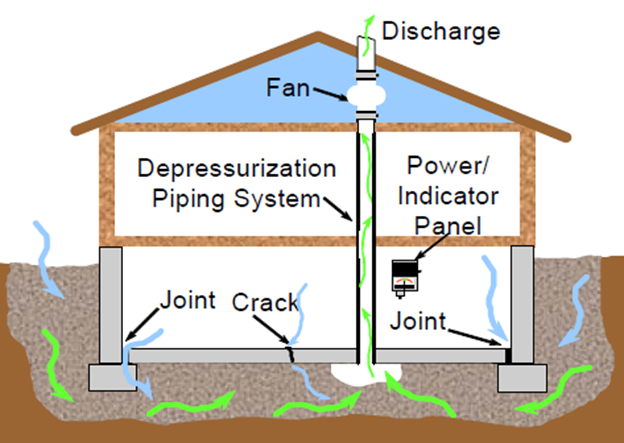Whether you’re aware of PFAS and the risks they pose, or you’re hearing about these chemicals for the first time, you’ve come to the right place. We have answers to property owners’ most frequently asked questions about this emerging environmental threat.
First things first: What are PFAS?
PFAS—per- and polyfluoroalkyl substances—refer to a group of manmade chemicals that have been used since the 1940s to make coatings and products that resist heat, oil, stains, grease, and water. There are thousands of these chemicals, and they’re used worldwide. Commonly found in water-repellant clothing, stain-resistant fabrics and carpets, some firefighting foams, adhesives, food packaging, electrical wire insulation, and non-stick cooking tools, PFAS are a concern because, in general, they:
- Do not break down, or break down slowly
- Can migrate through soil, water, and air
- Can build up in the bodies of fish and wildlife
- Are present in a variety of food products and the environment

PFAS are found in everything from adhesives to food packaging to non-stick cookware and beyond.
How do PFAS affect humans?
People who consume PFAS-contaminated water or food or use products that contain these chemicals risk exposure, but scientists don’t yet know the health effects of that exposure or even what levels of PFAS are harmful. Even so, studies on laboratory animals indicate that large amounts of PFAS affect these animals’ reproduction, thyroid function, immune system, and liver.
How widespread is the problem?
Since 1999, the CDC has measured at least a dozen different PFAS in people aged 12 and older who have taken part in the National Health and Nutrition Examination Survey. Scientists found four PFAS in the blood serum of nearly everyone they tested, indicating widespread exposure in the U.S. population.
Do property owners need to evaluate their existing portfolio for PFAS risks?
It depends.“There is no ‘one size fits all’ answer to this question,” says Jeffrey Porter, an environmental attorney with Boston-based Mintz. Porter, who chairs his firm’s Environmental Law Practice and solves complex environmental law challenges for some of the biggest global companies, told HAI Group, “If one has reason to believe a drinking water supply, private or public, has been or could be impacted by PFAS, I think that possibility should be evaluated now that EPA has concluded that the most minuscule concentrations of PFAS in drinking water are a human health concern. Whether or not to undertake other investigations would depend on one’s site-specific objectives.”

Jeffrey Porter
If you do hire a contractor to investigate the issue, as with any third party you hire, be sure to check their credentials. “Because PFAS are relatively unique in regard to the very small concentration that can be a concern, I would make sure that my environmental consultant has deep experience with PFAS and what can be done about them,” says Porter.
How do you clean up PFAS?
The most common response to PFAS is the long-term filtration of contaminated water. Porter told HAI Group that the construction and operation of water treatment facilities capable of removing the minute concentrations of PFAS that have been determined to be of concern in drinking water runs into the millions of dollars—and that he’s unaware of any filtration devices that can be retrofitted to a building.
Have PFAS been added to the ASTM Phase I standard for property transfer?
If you rely on a Phase I environmental site assessment to protect you from environmental cleanup liability when purchasing property, you probably know that certain issues, such as mold and asbestos, aren’t covered in the standard Phase I report. That’s because even though these issues can cause significant environmental and human health problems, they aren’t considered ‘recognized environmental conditions,’ or RECs, under Superfund law. That said, the latest Phase I ESA standard clarifies that prospective purchasers can ask that so-called non-scope issues be addressed in the report—a move you should consider if CERCLA liability isn’t your only concern. It’s probably a good idea, because while the federal government may consider PFAS a non-scope issue, more than 20 states have PFAS guidance, so it’s likely the property is affected by state regulations.
As of this writing, the U.S. Environmental Protection Agency is considering classifying two PFAS as RECs under CERLCA. Despite significant industry pushback, Porter says he expects the most commonly identified PFAS to be recognized as ‘hazardous substances’ as they are defined in CERCLA by the end of the year. He also believes the classification will likely remain in effect while the “inevitable” legal challenges to EPA’s action work their way through the courts.
Porter says Congress might also identify certain PFAS as hazardous substances. “There are pending bills that would do just that. In the meantime, PFAS have already been identified as hazardous by many states and have also been the source of billions of dollars of liability in federal and state court litigation, so one shouldn’t think they aren’t a problem just because EPA’s rulemaking isn’t final.”
Will property owners be on the hook for PFAS remediation, even if they conducted a Phase I environmental site assessment as part of their pre-purchase due diligence?
“Whether or not a property owner is ultimately on the hook may not matter much if one needs to endure protracted and expensive litigation before one knows the answer to that question,” said Porter, though he did add that thoughtful due diligence and careful consideration of the results mitigate that risk. “There may also be a role for environmental insurance.”
If you’re offered donated property, be sure to consider the potential environmental exposure before you accept.
What’s the best way to stay on top of PFAS developments?
If you’re interested in keeping abreast of this emerging environmental issue, you’re in good company. EPA says that addressing widespread PFAS contamination and who is going to pay for cleanup are currently the “hottest topics in environmental regulation.”
Porter favors EPA’s newsletter, which you can find here.
Additional resources:
- Toxicological Profile for Perfluoroalkyl
- Information about Per- and Polyfluoroalkyl Substances and Your Health
HAI Group Members and Policyholders: Interested in learning more about environmental insurance? Contact your account executive today.
This article is for general information only. HAI Group makes no representation or warranty about the accuracy or applicability of this information for any particular use or circumstance. Your use of this information is at your own discretion and risk. HAI Group and any author or contributor identified herein assume no responsibility for your use of this information. You should consult with your attorney or subject matter advisor before adopting any risk management strategy or policy.






